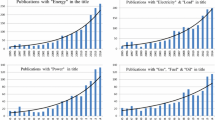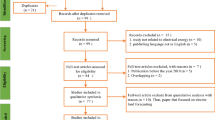Abstract
Until recently, the modelling of electricity system operations has mainly focused on hour-by-hour management. However, with the introduction of renewable energy sources such as wind power, fluctuations within the hour result in imbalances between supply and demand that are undetectable with an hourly time resolution. Ramping restrictions on production units and transmission lines contribute further to these imbalances. In this paper, we therefore propose a model for optimising electricity system operations within the hour. Taking a social welfare perspective, the model aims at reducing intra-hour costs by optimally activating so-called manual reserves based on forecasted imbalances. Since manual reserves are significantly less expensive than automatic reserves, we expect a considerable reduction in total costs of balancing. We illustrate our model in a Danish case study and investigate the effect of an expected increase in installed wind capacity. We find that the balancing costs do not outweigh the benefits of the inexpensive wind power, and that the savings from activating manual reserves are even larger for the high wind capacity case.










Similar content being viewed by others
Notes
Depending on the frequency with which activation of manual reserves is permitted by the market rules or technical restrictions of the units, and taking into account the running time of the model, \(\tau \) can for example be taken to be 5 or 10 min.
This assumption can be justified for power generation units with start-up times in excess of a few hours. However, some power generation units may have start-up times less than an hour, in which case this is a simplifying assumption.
For example, assume that 5 MWh (per \(\tau \)-minute time interval) is activated at time 12:00 for 20 min. At 12:10, we may additionally activate 5 MWh for 20 min. Total amount of reserves provided is then 5 MWh at 12:00, 10 MWh at 12:10, and 5 MWh at 12:20.
System data has kindly been provided by Energinet.dk, which is the Danish transmission system operator (TSO).
In stochastic programming terms, this corresponds to the subproblems used in computing the expected value of the wait-and-see solutions and the expected result of using the expected value solution.
In stochastic programming terms, this corresponds to a assuming a two-stage decision process, in which manual reserve and transmission decisions are made before the realisation of uncertainty and automatic reserve decision are made after the realisation.
References
Bouffard, F., & Galiana, F. (2008). Stochastic security for operations planning with significant wind power generation. IEEE Transactions on Power Systems, 23(2), 306–316. doi:10.1109/TPWRS.2008.919318.
Bunn, D. W., & Paschentis, S. N. (1986). Development of a stochastic model for the economic dispatch of electric power. European Journal of Operational Research, 27(2), 179–191. doi:10.1016/0377-2217(86)90059-7.
Carøe, C. C., & Schultz, R. (1998) A two-stage stochastic program for unit commitment under uncertainty in a hydro-thermal power system. Tech. Rep. SC-98-11, ZIB, Takustr.7, 14195 Berlin.
Carrión, M., & Arroyo, J. (2006). A computationally efficient mixed-integer linear formulation for the thermal unit commitment problem. IEEE Transactions on Power Systems, 21(3), 1371–1378. doi:10.1109/TPWRS.2006.876672.
Dillon, T., Edwin, K.W., Kochs, H.D., & Taud, R.J. (1978). Integer programming approach to the problem of optimal unit commitment with probabilistic reserve determination. IEEE Transactions on Power Apparatus and Systems, PAS-97(6):2154–2166. doi:10.1109/TPAS.1978.354719.
Doorman, G., & Nygreen, B. (2003). Market price calculations in restructured electricity markets. Annals of Operations Research, 124(1–4), 49–67.
Ela, E., & O’Malley, M. (2012). Studying the variability and uncertainty impacts of variable generation at multiple timescales. IEEE Transactions on Power Systems, 27(3), 1324–1333. doi:10.1109/TPWRS.2012.2185816.
Farahmand, H., & Doorman, G. (2012). Balancing market integration in the Northern European continent. Applied Energy, 96, 316–326. doi:10.1016/j.apenergy.2011.11.041.
Garver, L. (1962). Power generation scheduling by integer programming-development of theory. Transactions of the American Institute of Electrical Engineers Part III Power Apparatus and Systems, 81(3), 730–734. doi:10.1109/AIEEPAS.1962.4501405.
Gollmer, R., Nowak, M. P., Römisch, W., & Schultz, R. (2000). Unit commitment in power generation-a basic model and some extensions. Annals of Operations Research, 96(1–4), 167–189.
Heredia, F.-J., Rider, M. J., & Corchero, C. (2012). A stochastic programming model for the optimal electricity market bid problem with bilateral contracts for thermal and combined cycle units. Annals of Operations Research, 193(1), 107–127. doi:10.1007/s10479-011-0847-x.
Hobbs, B. F., Rothkopf, M. H., O’Neill, R. P., & Chao, H.-P. (Eds.) (2001) The next generation of electric power unit commitment models. Springer Science & Business Media 36
Jaehnert, S., & Doorman, G. L. (2012). Assessing the benefits of regulating power market integration in Northern Europe. International Journal of Electrical Power & Energy Systems, 43(1), 70–79. doi:10.1016/j.ijepes.2012.05.010.
Jordà, Ò., & Marcellino, M. (2010). Path forecast evaluation. Journal of Applied Econometrics, 25(4), 635–662. doi:10.1002/jae.1166.
Lindgren, E., & Söder, L. (2008). Minimizing regulation costs in multi-area systems with uncertain wind power forecasts. Wind Energy, 11(1), 97–108.
Louie, H. (2010) Evaluation of probabilistic models of wind plant power output characteristics. In Probabilistic methods applied to power systems (PMAPS), 2010 IEEE 11th international conference, Singapore: 442–447.
Lund, H. (2007). Renewable energy strategies for sustainable development. Energy, 32(6), 912–919. doi:10.1016/j.energy.2006.10.017. third Dubrovnik Conference on Sustainable Development of Energy, Water and Environment Systems.
Morales, J., Conejo, A., & Pérez-Ruiz, J. (2009). Economic valuation of reserves in power systems with high penetration of wind power. IEEE Transactions on Power Systems, 24(2), 900–910. doi:10.1109/TPWRS.2009.2016598.
Morales-España, G., Latorre, J., & Ramos, A. (2013). Tight and compact MILP formulation of start-up and shut-down ramping in unit commitment. IEEE Transactions on Power Systems, 28(2), 1288–1296. doi:10.1109/TPWRS.2012.2222938.
Nowak, M. P., & Römisch, W. (2000). Stochastic lagrangian relaxation applied to power scheduling in a hydro-thermal system under uncertainty. Annals of Operations Research, 100(1–4), 251–272. doi:10.1023/A:1019248506301.
Ostrowski, J., Anjos, M., & Vannelli, A. (2012). Tight mixed integer linear programming formulations for the unit commitment problem. IEEE Transactions on Power Systems, 27(1), 39–46. doi:10.1109/TPWRS.2011.2162008.
Papavasiliou, A., & Oren, S. S. (2013). Multiarea stochastic unit commitment for high wind penetration in a transmission constrained network. Operations Research, 61(3), 578–592. doi:10.1287/opre.2013.1174.
Pritchard, G., Zakeri, G., & Philpott, A. (2010). A single-settlement, energy-only electric power market for unpredictable and intermittent participants. Operations Research, 58(4–Part–2), 1210–1219. doi:10.1287/opre.1090.0800.
Sheble, G. B., & Fahd, G. N. (1994). Unit commitment literature synopsis. IEEE Transactions on Power Systems, 9(1), 128–135. doi:10.1109/59.317549.
Takriti, S., Birge, J. R., & Long, E. (1996). A stochastic model for the unit commitment problem. IEEE Transactions on Power Systems, 11(3), 1497–1508. doi:10.1109/59.535691.
Weber, C., Meibom, P., Barth, R., & Brand, H. (2009). WILMAR: A stochastic programming tool to analyze the large-scale integration of wind energy. In Optimization in the energy industry, chap 19, pp 437–458, Energy Systems, Springer, Berlin.
Zheng, Q., Wang, J., Pardalos, P., & Guan, Y. (2012). A decomposition approach to the two-stage stochastic unit commitment problem. Annals of Operations Research, 210(1), 387–410. doi:10.1007/s10479-012-1092-7.
Acknowledgments
The authors gratefully appreciate many valuable comments and suggestions from two anonymous referees, Pierre Pinson from the Technical University of Denmark and Peter Meibom from the Danish Energy Association, as well as discussions of the problem with Energinet.dk. Jeanne Aslak Petersen acknowledges support through the CFEM project and Trine Krogh Boomsma through the ENSYMORA project, both funded by the Danish Council of Strategic Research (09-067008/DSF and 10-093904/DSF, respectively). Ditte Mølgård Heide-Jørgensen acknowledges the support through the iPower project also funded by the Danish Council of Strategic Research via the DSR-SPIR program (10-095378).
Author information
Authors and Affiliations
Corresponding author
Additional information
Jeanne Aslak Petersen and Ditte Mølgård Heide-Jørgensen contributed equally to this work.
Electronic supplementary material
Below is the link to the electronic supplementary material.
Rights and permissions
About this article
Cite this article
Aslak Petersen, J., Heide-Jørgensen, D.M., Detlefsen, N.K. et al. Short-term balancing of supply and demand in an electricity system: forecasting and scheduling. Ann Oper Res 238, 449–473 (2016). https://doi.org/10.1007/s10479-015-2092-1
Published:
Issue Date:
DOI: https://doi.org/10.1007/s10479-015-2092-1




